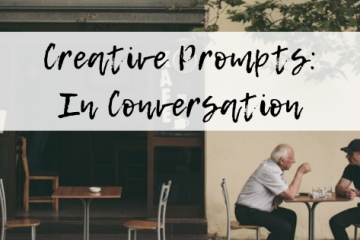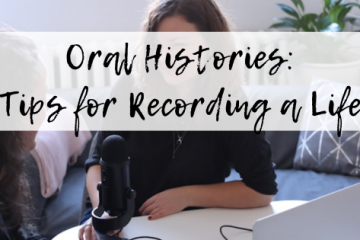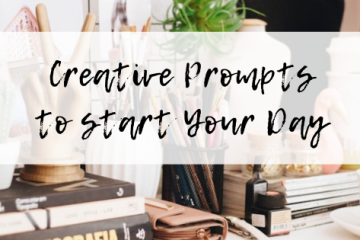

I recently returned from a trip to visit my son in Melbourne and my mum in Tasmania.
While in Melbourne, I spent time in the suburb where my son is currently living, and which is also where my great-grandmother was born. What I didn’t know until Mum and I dug a little deeper was that not only did my great-grandmother Myrtle live in the same suburb, but for a few years of her childhood, she actually lived in the same street!
And in a couple of weeks I’m heading to Kalgoorlie, where Myrtle and her daughter Mickey (my grandmother) lived during the 1920s and 1930s. I’m pretty excited that a poem I wrote about an image of my grandmother as a young girl (image #32) was shortlisted for inclusion in the Looking Forward/Looking Back Poetry Evening and exhibition. And I’m equally excited to visit where Myrtle and Mickey lived and worked, including a dressmaking shop in a building that is still standing in the town’s main street.
I love this kind of experiential, tactile research!
But you don’t have been trying to track down a dead relative to make the most of experiential research. I have used it to build the world of both historical (e.g. a middle-grade novel about Perth during the Second World War), contemporary fiction (in a town remarkably similar to one I visit regularly) and memoir (to evoke both memories and the five senses).
Below are a number of creative prompts to help you remember, visualise or re-create a place where you, your ancestors or a fictional character lived, based on the research activities I actually employ for my own writing projects.
1. Walk
If you are able to visit the place you, your ancestors or a fictional character lived in, then take a walk. Walk the streets of the suburb.
If possible find the address (if you don’t know this, see prompt #7 Archival Research below).
If you are researching an historical time period, are you able to determine the likelihood of the house being the same building, or has it been knocked down and replaced by something newer? Are the street numbers the same now as in the past? Has the street name ever changed? If you think it could be the same place, take a photo.
If, for example, it’s the place of your childhood, what memories are evoked for you? If you’re tracing the steps of an ancestor, how does it feel to be physically in the same space as they once lived? Make notes about the sights, sounds, smells and textures you notice.
2. Take Notice
This prompt is an extension of the previous one, and it’s inspired by the picture book Ten Tiny Things by Meg McKinlay, about what we notice when we walk instead of race by in our cars.
Whether it’s your local area, a place from your family history, or the setting of a fictional work, head out for a walk. Notice the little things. Take photos to remind yourself. Incorporate these into your writing or art somehow. It is often the small, specific details that help to create the texture of lived experience in a project.
If nothing else, walking itself is a great way to get the creative juices flowing or ruminate over a piece of your project that’s eluding you!

3. Take a Guided Walking Tour
Each year, the National Trust runs the Australian Heritage Festival, which includes history walks and talks in numerous places. In 2023, these will take place over the months of April and May, so it’s worth checking out if the town or city where you, an ancestor, or even a fictional character live/d has a tour organised.
Outside of the festival, you can often find individuals or companies who run walking tours of the place you are researching.
Who knows what fascinating details you might discover?!?
4. Annotate an existing map
Download/print out/purchase a map of somewhere either you or an ancestor lived, or is part of the world in which your fictional character exists. Add post-it notes and relevant images to the map to create a picture of what it was like to have lived in this place at a particular time.
Hint: Your state library or the local history centre at your local library are a great repositories of maps if you can’t find one online that is high resolution.
Hint: comparing and contrasting old and current maps or street directories can offer an interesting perspective on the way a place has changed.
5. Create a map
If the world of your story is entirely fictional, spend time creating a map of the town, country or universe you have imagined. You could also adapt the previous exercise to fit with your imagined world.
6. Collect images
If you cannot physically visit a place—or perhaps you have access to a place but not the era—try searching online for images; you’d be surprised at how much you can find. What details in these images can you incorporate into your current creative project?

7. Archival Research
If you are attempting to recreate the past, archival research such as street directories, war service records and newspaper articles can also provide clues as to where someone lived. Check out Trove for example, which is a digital archive of historical newspapers, but also other resources such as photos, maps and diaries.
Contextual information that is about a place and time, but not directly about your subject can also offer hints and the texture of lived experience. This might include books, unpublished memoirs or documents and oral histories, some of which might be found in your state library or local history centre, or even sitting in a relative’s cupboard.
8. Create
Incorporate some or all of what you discover into your creative work.



